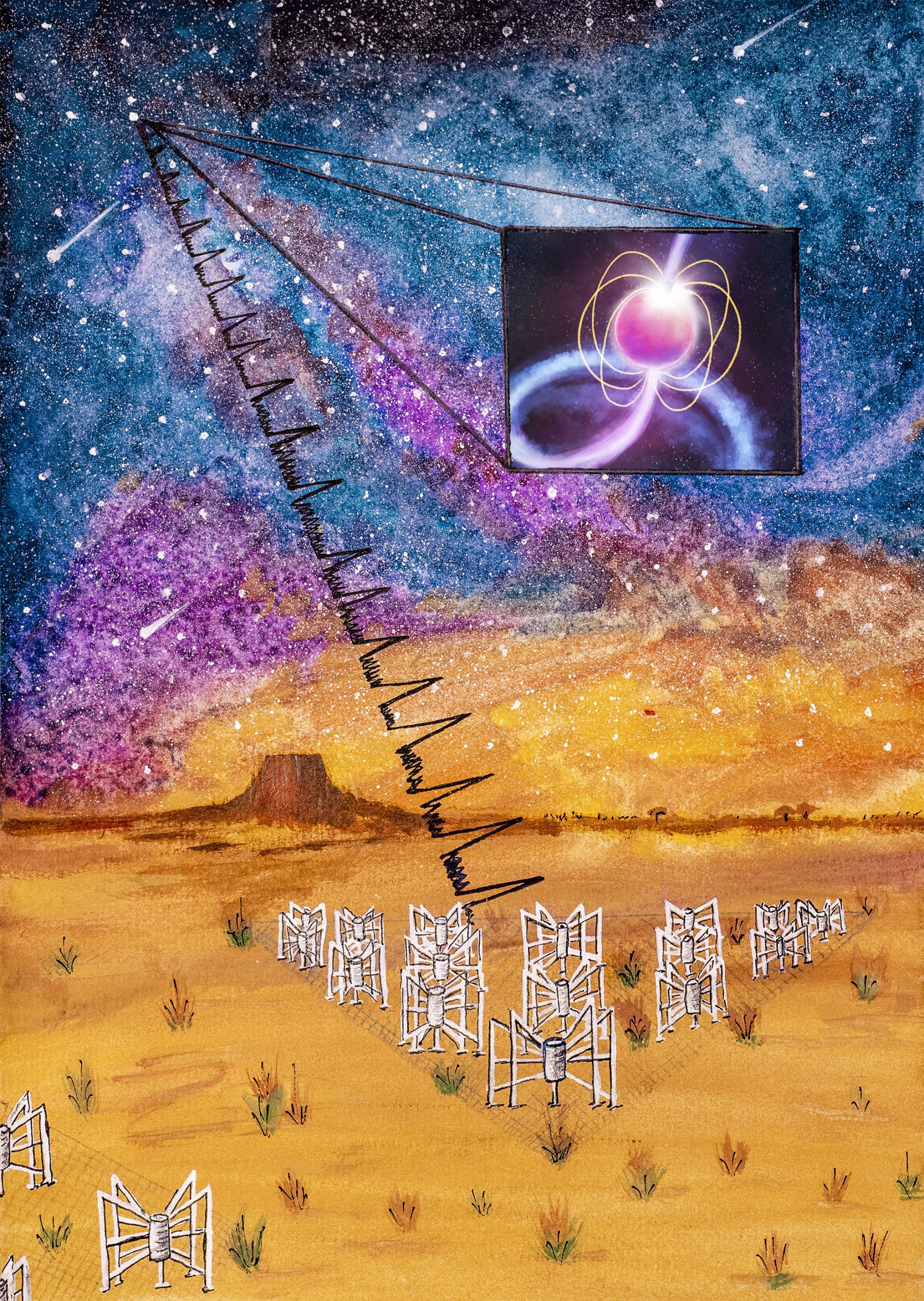First pulsar detection for MWA
In April 2021, the detection of a previously unknown pulsar was announced via the publication of a paper in The Astrophysical Journal Letters. The low-luminosity pulsar was found using the MWA – a first for the radio telescope.
Pulsars are created by supernova explosions when massive stars reach the end of their lives. One result of such an explosion can be a collapsed core known as a pulsar – a small, incredible dense object with a strong magnetic field and a rapid spin. As it spins, a pulsar sends electromagnetic radiation out into space from its magnetic poles, which can be picked up at radio wavelengths by telescopes such as the MWA.
The discovery was made by PhD Student Nick Swainston at the Curtin University node of the International Centre for Radio Astronomy Research (ICRAR), while processing data from an ongoing MWA survey. Processing of this type can be incredibly challenging, especially at the frequency bands of the MWA, but fortunately researchers involved in this discovery were awarded time on the OzSTAR supercomputer. Operated by Swinburne University of Technology and supported by AAL via NCRIS, OzSTAR allowed them to crunch the enormous amounts of data made available through the MWA pulsar survey. Time on OzSTAR was allocated to the team at ICRAR by the Astronomy Supercomputing Time Allocation Committee (ASTAC). ASTAC is managed and operated by AAL and funded via the NCRIS program, and ICRAR-Curtin astronomer Dr Ramesh Bhat says they could not have made the finding without it.
“ASTAC time has been very important for us. Given the small size of our team and the limited resources at hand, we wouldn’t have managed to get here without the consistent support we received via the ASTAC allocation.”
There is also an expectation that this finding may be merely the beginning, and that many more pulsars will be discovered by analysing the remaining MWA survey data using a supercomputer like OzSTAR – currently, only around one percent of this has been processed. New MWA Director Professor Steven Tingay believes there is likely a large population of pulsars awaiting discovery in the Southern Hemisphere, and that the MWA and future SKA are well placed to find them.
“This finding is really exciting because the data processing is incredibly challenging, and the results show the potential for us to discover many more pulsars with the MWA and the low-frequency part of the SKA.”



